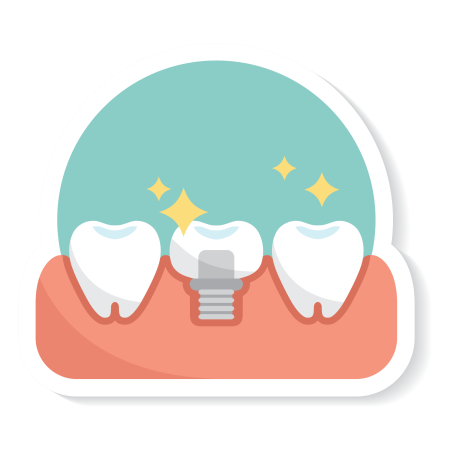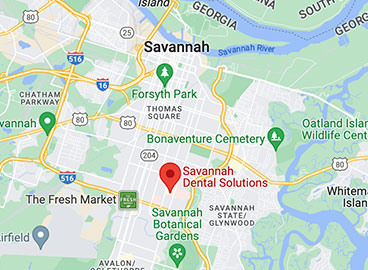In modern dentistry, a dental implant is considered the gold standard to replace a missing or failing tooth. Individual dental implants can be used to replace any number of teeth from one to an entire arch. Implant-supported overdentures and fixed bridges are more cost-effective solutions for spans of missing teeth. Regardless of which procedure you choose, however, the general process is very similar.

Evaluation and Planning
The first step is to determine whether you are a good candidate for implants, and what steps need to occur before you are ready for the implant placement. Your dentist will take detailed X-rays and scans to learn the current condition of your mouth. You will then work together to develop a plan of action. At this stage, it is very important to ask questions and express your concerns to ensure that you end up with the best possible plan for your unique needs.
Extraction and Repair
The success rate for dental implants is extremely high, but they need to be given the best possible chances for success. To guard against infection and possible failure, they must be placed in a healthy mouth. Therefore, if you need other dental work such as fillings or root canals, your dentist will take care of those projects first.
Since dental implants replace teeth, your failing teeth must be extracted. In most cases, this is a simple matter that needs only local anesthesia. However, if your extractions are complicated or you are nervous, you can opt for sedation. Discuss this with your dentist during your planning appointment to learn exactly what your choices are and whether you will need someone to drive you home.
Possible Bone Grafting
Most people do not need bone grafting, which replaces jawbone that was lost due to severe decay or trauma. If you need it, though, you must have it done, as the implant must be able to fuse into bone. This procedure is relatively simple, but it requires several months of healing time.
Implant Placement
Dental implants are usually placed under local anesthesia. After thoroughly numbing your mouth, your dentist will cut a precise flap in your gum tissue, and then use a series of drills to gently open a hole in your jawbone. The implant is then screwed in and secured, and the gum tissue is stitched back together.
The implant may be topped with either a cover screw or a healing cap. A cover screw is a flat piece that protects the implant during healing. A healing cap is similar, but is shaped like an abutment, which is the piece that eventually connects the implant to the crown. This allows your gums to heal in just the right position for your final restoration.
Depending on how many teeth were extracted, and where they are positioned in your mouth, you might receive a temporary partial or full denture to wear during healing. This ensures that you are never without teeth.
Abutment and Crown
After your mouth heals for a few months, you will be ready for an abutment and crown. This is a relatively minor procedure in which the dentist will reopen the gum tissue and replace the healing cap or cover screw with an abutment. The final crown is then fitted on top.
For those who are having multiple teeth replaced, the dentist will have placed two or more implants at strategic spots in your mouth. You will receive abutments for all of the implants, along with a dental bridge or overdenture, at this time.
All-on-4
All-on-4 is an excellent alternative to the traditional implant process for those who need an entire arch of teeth replaced. After your teeth are extracted, your dentist can immediately place four implants at key points along your upper or lower arch. These immediate-load implants are capable of taking the pressure of regular eating and chewing with no waiting period.
You will receive a fixed set of acrylic teeth immediately, so you can begin eating normally as soon as you feel ready, which is typically within a day or two. You have the option of having the acrylic teeth replaced with porcelain teeth in a few weeks or months for an even more natural look and feel.
Dental implants are considered the gold standard in modern tooth replacement. Many people are afraid or unsure of the process, but we are confident that you will find it quite simple and easy. We encourage you to ask as many questions as you like to ensure that dental implants are the right choice for you.
Married dentists Chad and Alexandra Schnabel welcome you to Savannah Dental Solutions. From caring children’s dentistry to high-tech cosmetic procedures and even full-mouth reconstruction, we blend the latest technology with traditional customer-oriented values. To start your journey to better oral health, call us today at (912) 354-1366.


